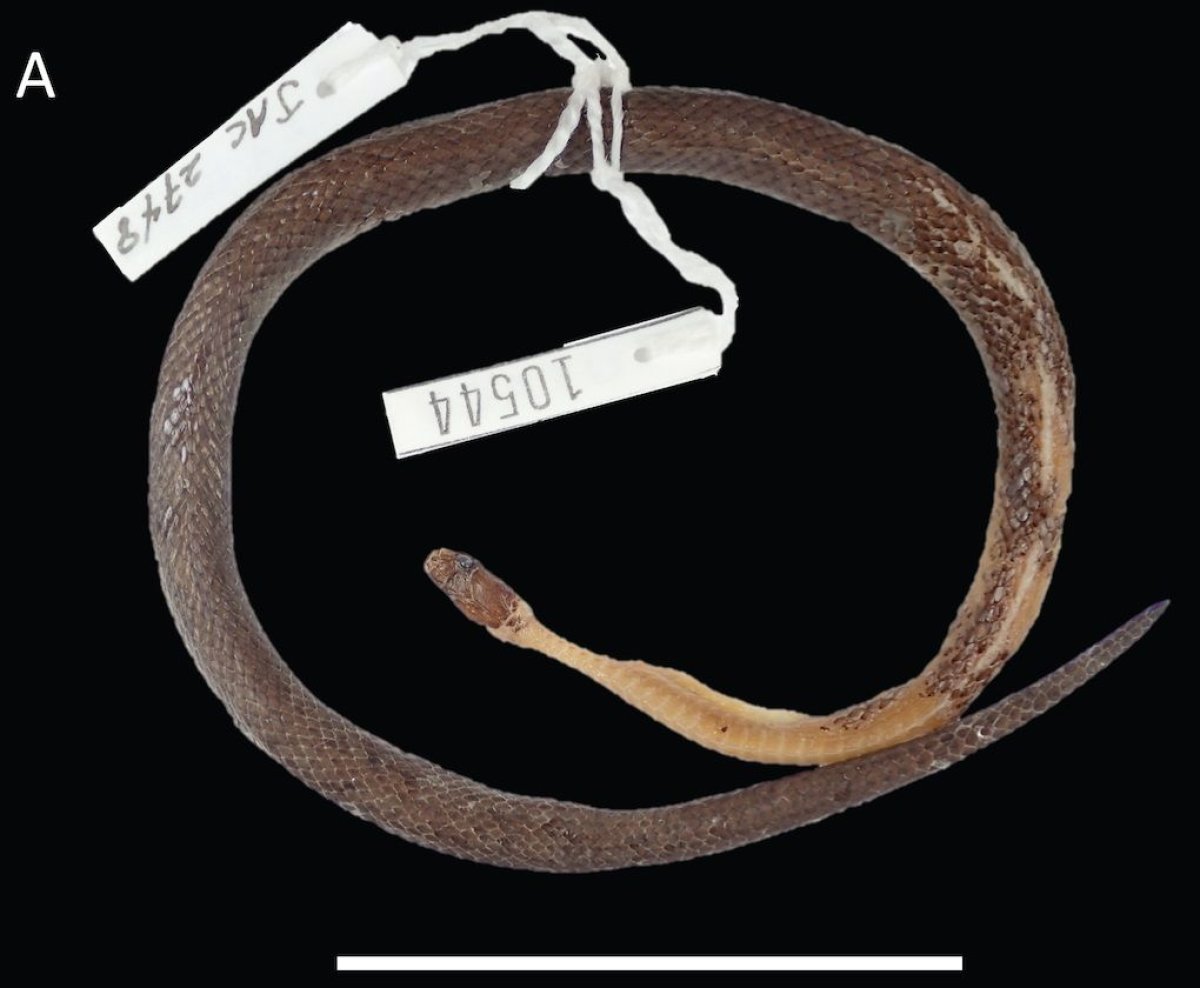Scientists have identified a new type of snake, which was found inside the stomach of another snake. Researchers at the University of Texas at Arlington named the serpent Cenaspis aenigma, Latin for "mysterious dinner snake."
The snake is a new species and a new genus—the name for a group which contains individual species. It is characterized by its set of undivided scales beneath its tail and the shape of its skull. In addition, while other similar snakes have spines on their hemipenes reproductive organs, this animal has a set of cups called calyces.
Read more: Greenland's ice sheet reaching 'tipping point,' melting four times faster than 2003

Jonathan Campbell, professor of biology at the University of Texas at Arlington, told Newsweek: "Snakes, like all animals, have a number of characteristics that vary among species, allowing us to identify individual species. Some species are differentiated from each other by relatively minor differences. Cenaspis aenigma however differs from all other species in its family (which contains hundreds of species) by a number of dramatic traits, including reproductive anatomy, skeletal system, and scalation."
Most snake species were discovered decades ago, said Campbell, and fewer and fewer new animals are identified. Those that are found are members of well-known groups. "To find a new snake so distinctive that it warrants its own new genus is unusual," he said. "Also, to find one that happened to be consumed by another snake is a bit remarkable."
In 1976, palm harvesters found the 10-inch creature inside the digestive tract of a brightly colored Central American coral snake, in the dense, mountainous rainforest of Chiapas, southern Mexico. The diet of the coral snake is known to consist of frogs, lizards and smaller snakes. The body was removed from the coral snake, and kept in the collection of a museum.
And despite the efforts of herpetologists, who have scoured the region near Chiapas in more than 12 trips over the past four decades, no other Cenaspis aenigma snakes have been found. The findings were published in the Journal of Herpetology.
Campbell told National Geographic the snake likely lived off spiders and insects, but without being able to study live specimens the herpetologists can't be sure. He believes other examples of Cenaspis aenigma are likely slithering around the rainforests of Chiapas, but are elusive because of their tendency to burrow.
Dr. Sara Ruane, assistant professor in evolution at the at Rutgers University-Newark, who did not work on the study, told National Geographic: "This is an excellent contribution to herpetology and reminds us all that you never know what new information you may get when doing field collections and taking a closer look at what is already in museums—and why such collections are important."
Earlier this month, researchers found a new species of tree frog in a remote part of the Ecuadorean Andes. In their paper published in the journal ZooKeys, the authors described the black and yellow-dotted amphibian's prepollex; an undeveloped digit protruding from its thumb which resembles a claw. Researchers weren't sure what the prepollex was for, but reasoned it could be harnessed during fights, or to ward of predators.
This article has been updated with comment from Jonathan Campbell.

Uncommon Knowledge
Newsweek is committed to challenging conventional wisdom and finding connections in the search for common ground.
Newsweek is committed to challenging conventional wisdom and finding connections in the search for common ground.
About the writer
Kashmira Gander is Deputy Science Editor at Newsweek. Her interests include health, gender, LGBTQIA+ issues, human rights, subcultures, music, and lifestyle. Her ... Read more
To read how Newsweek uses AI as a newsroom tool, Click here.








